Bluetooth vs WiFi: Choosing the Best Connectivity for Your IoT Project
Written by:

Kostiantyn Oliynyk
Head of IoT at Webbylab
With a robust academic background in Telecommunication Systems Engineering, I apply my knowledge to lead innovations in the IoT domain. Starting as the first team member in the newly formed IoT department at WebbyLab, I've spearheaded its growth, fostering the expansion into embedded and hardware development alongside our core software projects. My dedication lies in pushing the boundaries of IoT technology, fostering a culture of innovation and excellence that profoundly impacts our clients' operational success.
Choose Bluetooth Internet of Things over WiFi for devices that operate on low power since Bluetooth consumes less energy than WiFi.
Yes! You can use the Internet of Things Bluetooth and WiFi simultaneously for more connectivity options and features.
Both technologies can be vulnerable to security threats if not configured properly. Yet, using encryption, strong passwords, and access controls, as well as avoiding open WiFi networks, can help you tackle most risks.
Of course! WebbyLab has experience integrating both Bluetooth and WiFi, so we can surely do this for your project.
The time to build and deploy a Bluetooth/WiFI IoT solution depends on various factors. Some may include your project’s complexity and specific hardware, firmware, and software requirements. If you’d like to get a better idea of the timeline for your specific needs, contact our team for a consultation.
When learning how to choose IoT router, go for one with strong security, dual or tri-band WiFi, and mesh support for better coverage. The best router for IoT devices should also smoothly handle multiple connections.

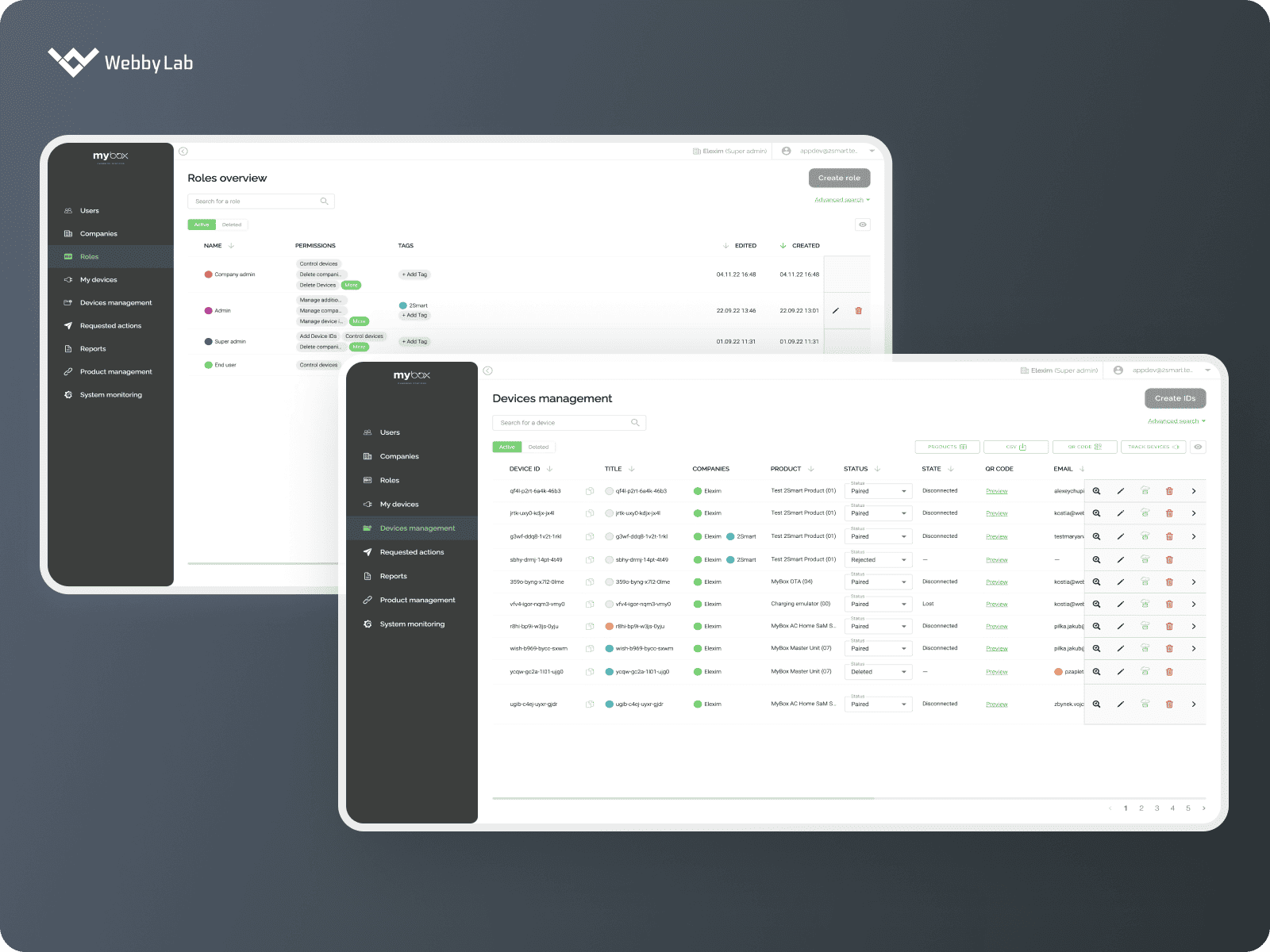 MyBox admin panel developed by WebbyLab
MyBox admin panel developed by WebbyLab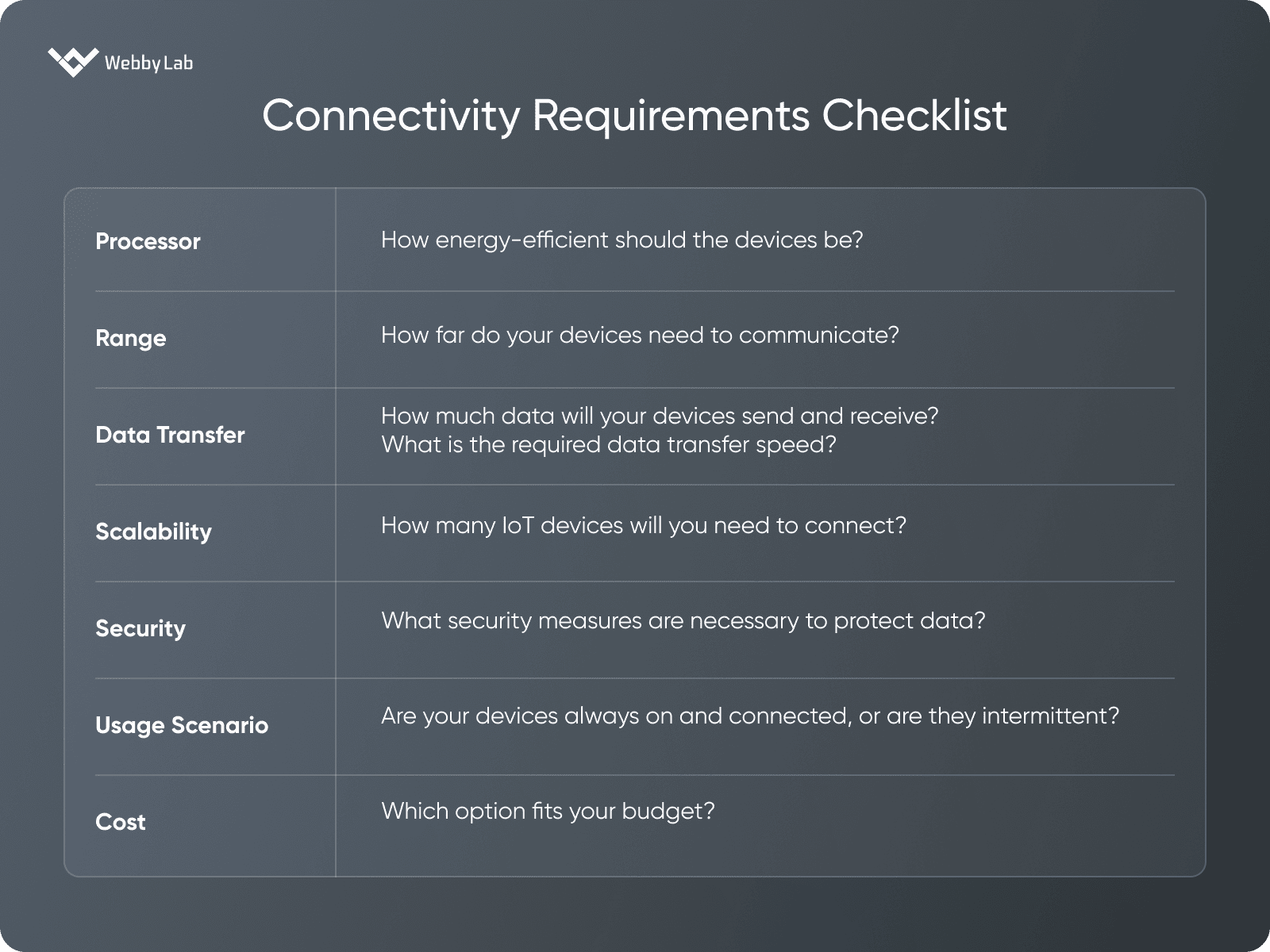 Connectivity requirements checklist
Connectivity requirements checklist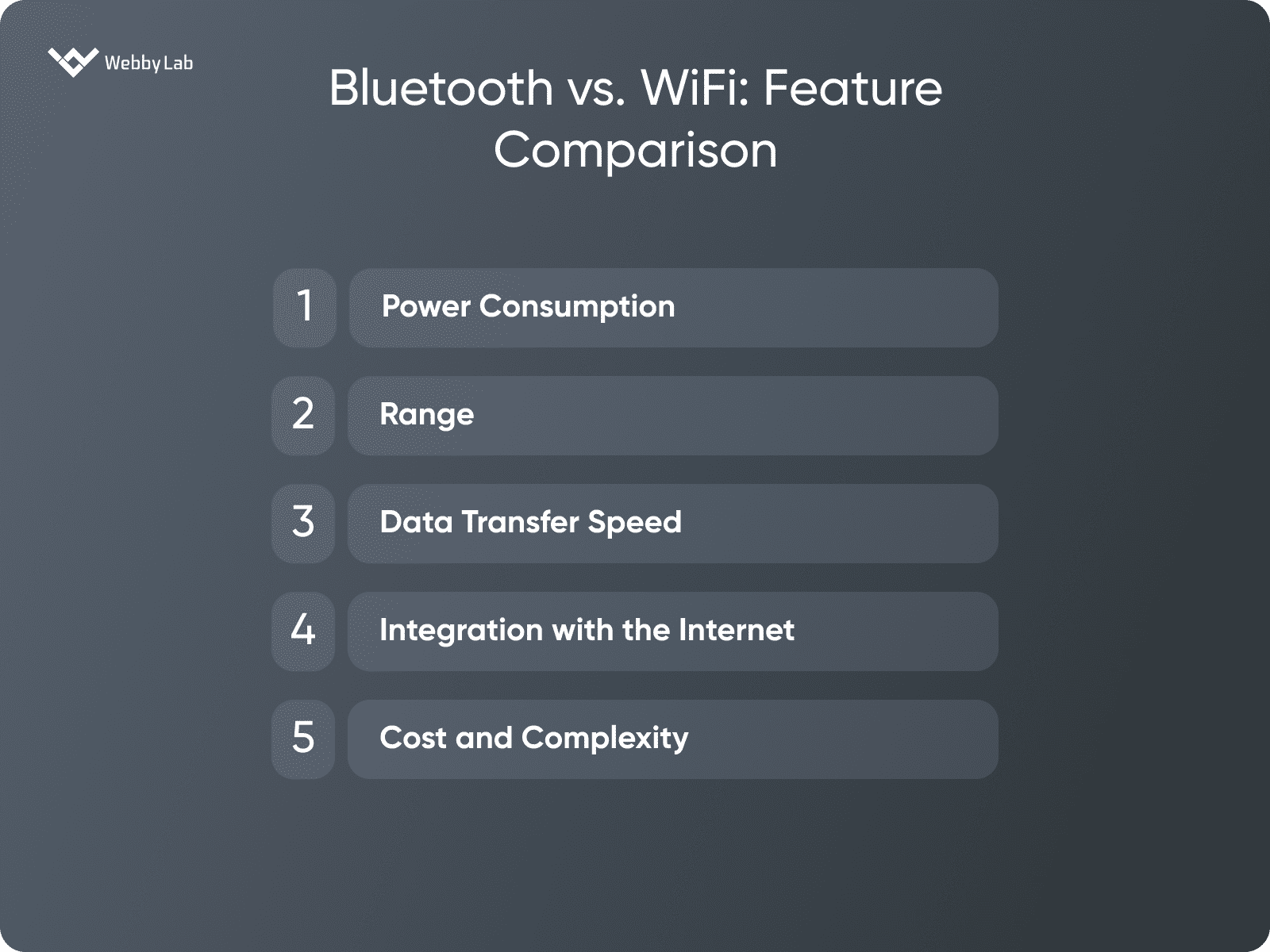

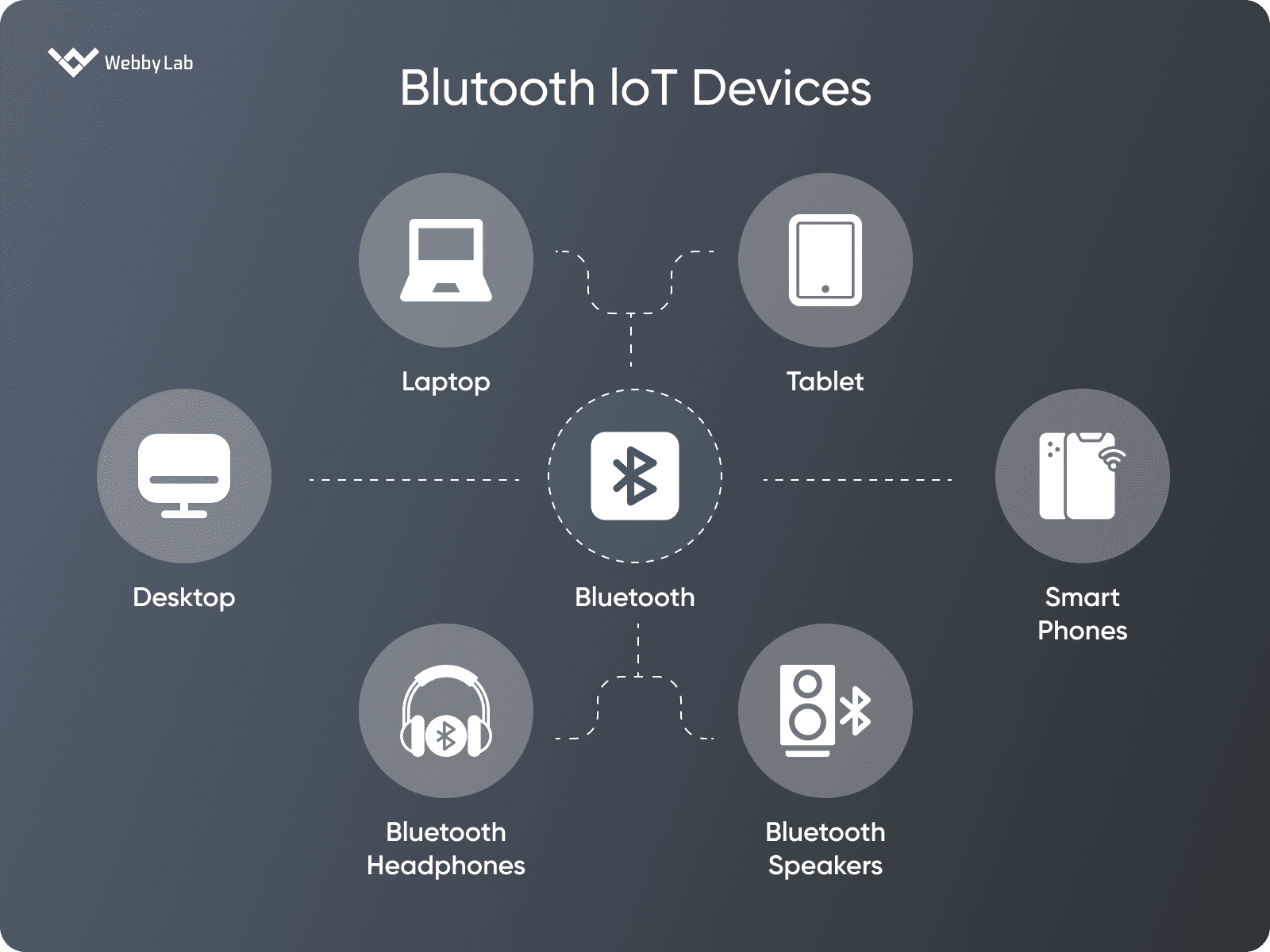 Bluetooth operation scheme
Bluetooth operation scheme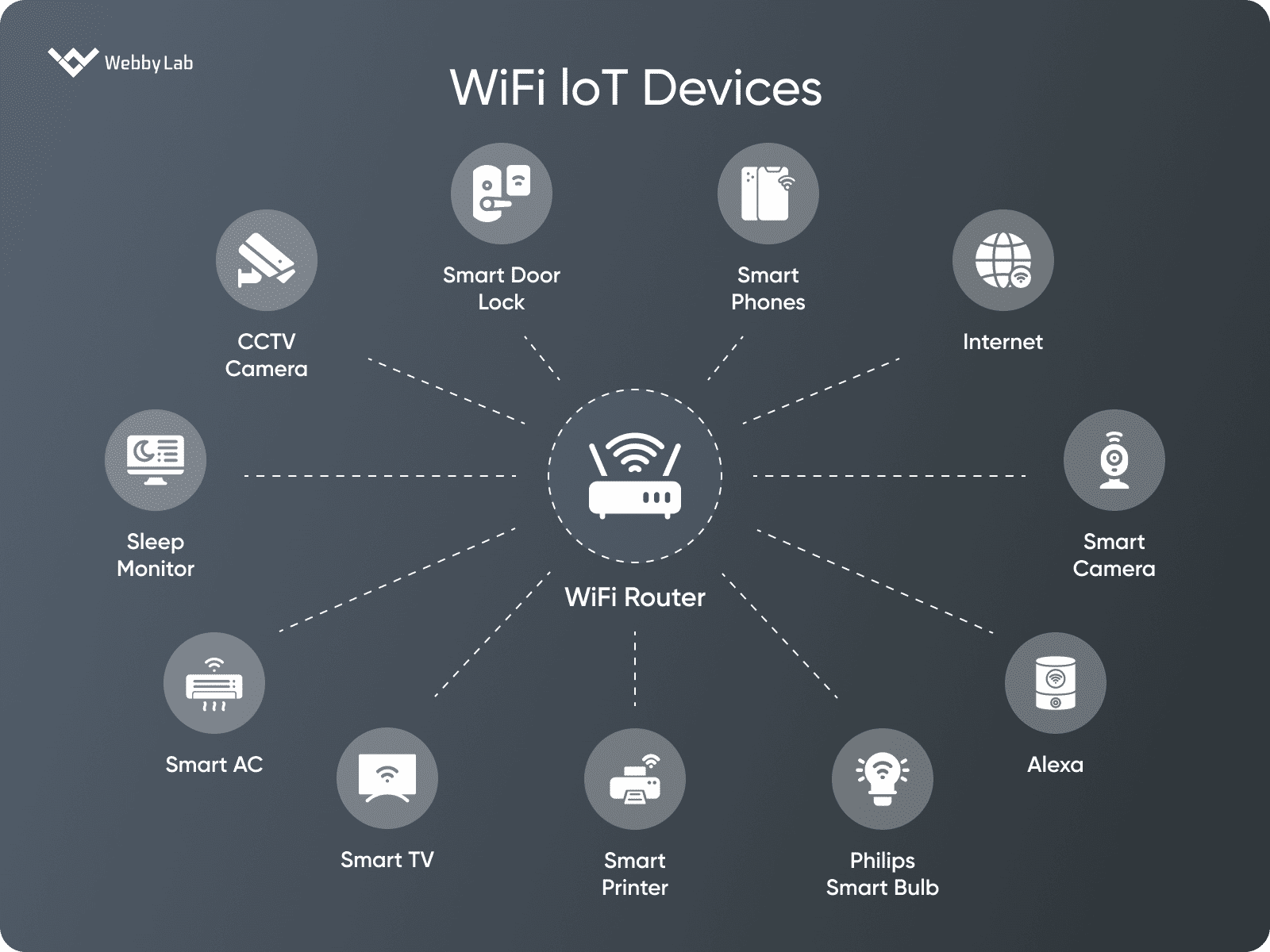 WiFi operation scheme
WiFi operation scheme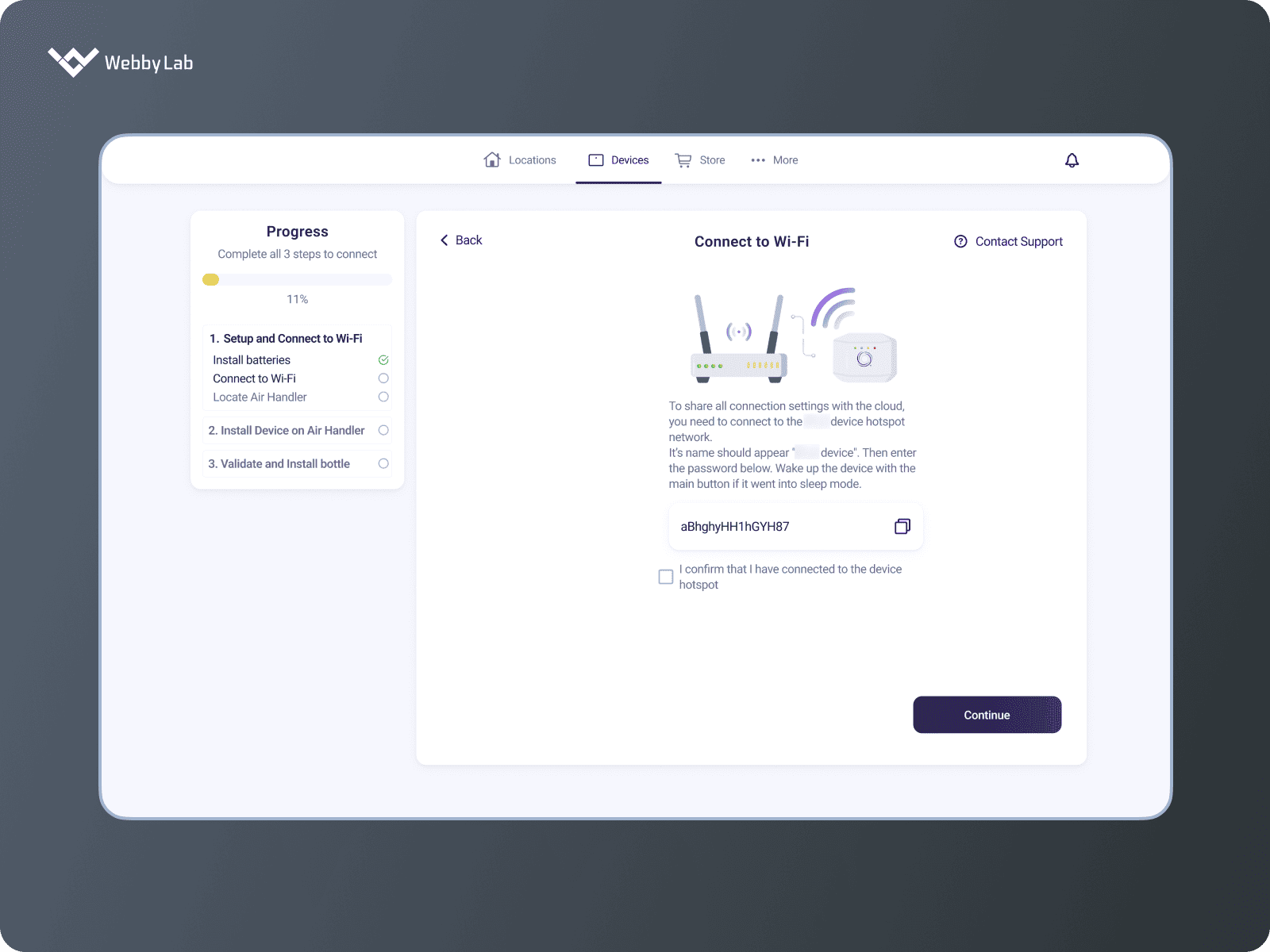 Connecting A/C drain line cleaners to WiFi
Connecting A/C drain line cleaners to WiFi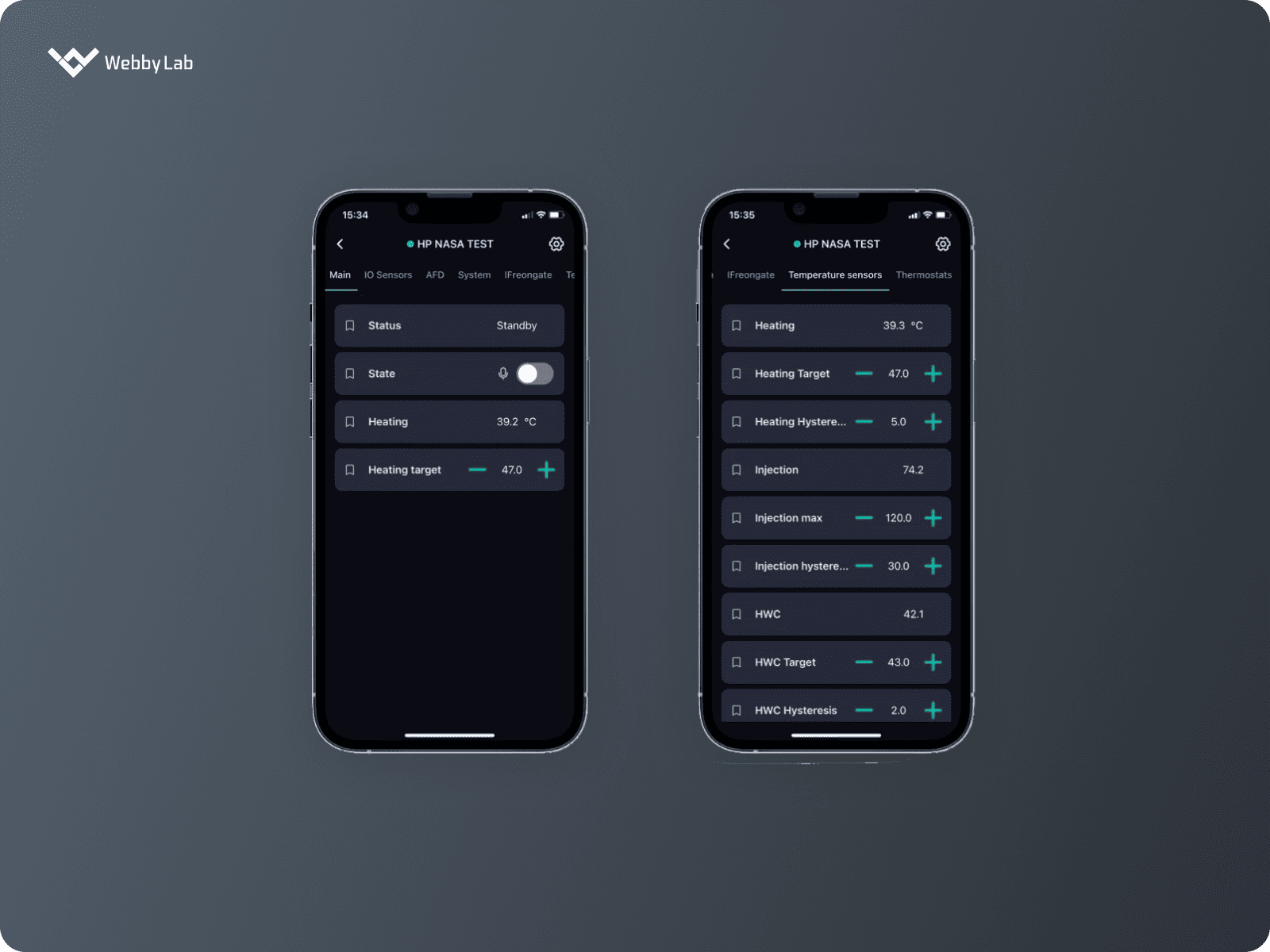 Monitoring telemetry sensors through SmartHeat
Monitoring telemetry sensors through SmartHeat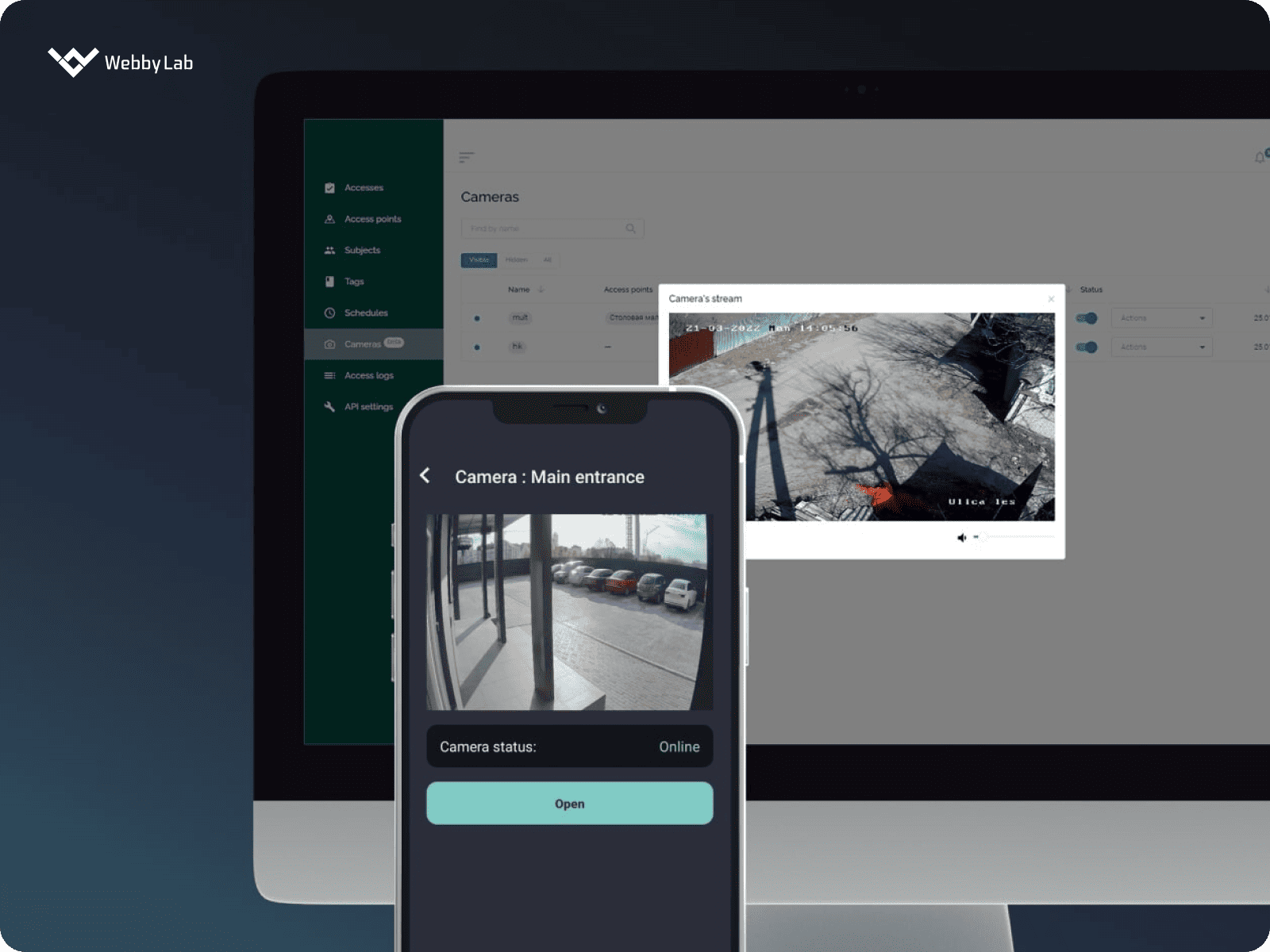 Connecting to surveillance cameras through Propuskator
Connecting to surveillance cameras through Propuskator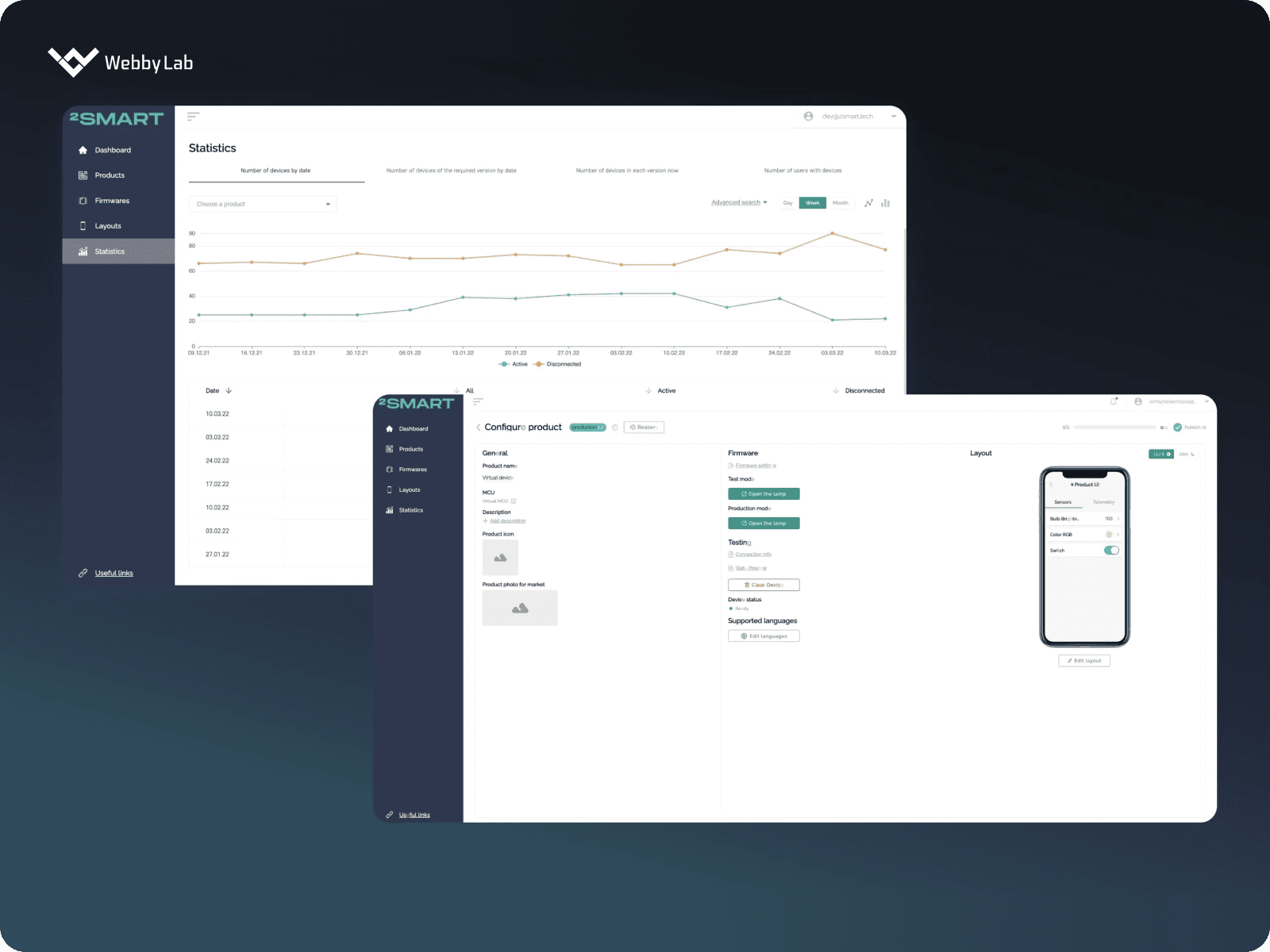 Configuring WiFi devices through 2Smart Cloud
Configuring WiFi devices through 2Smart Cloud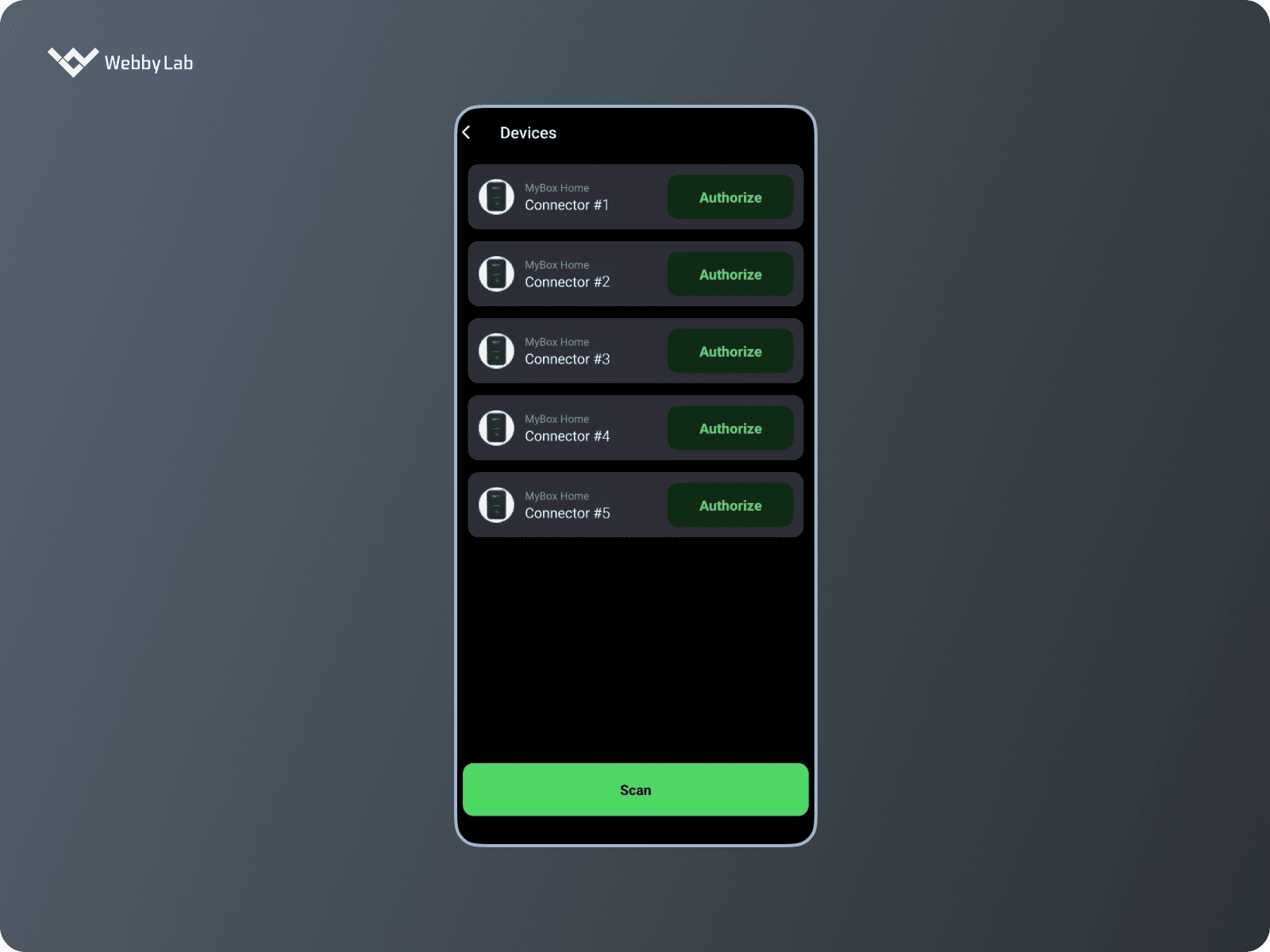 Authorizing users through BLE in MyBox
Authorizing users through BLE in MyBox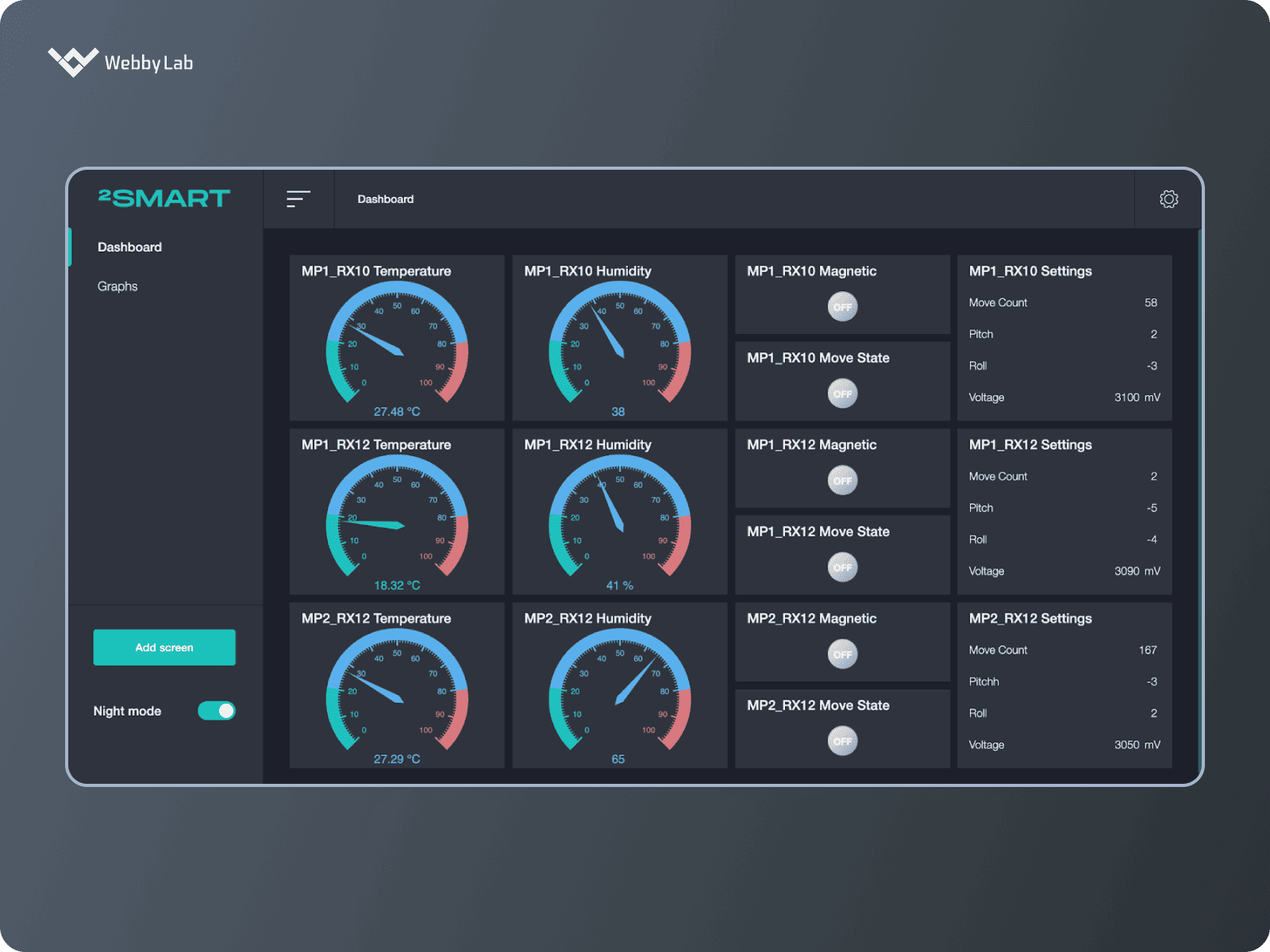 Monitoring Teltonika devices through 2Smart Standalone
Monitoring Teltonika devices through 2Smart Standalone



